Abstract
An epidemiology analysis of a series of 12 Aeromonas hydrophila infections, including six of septicaemia, which occurred on several wards of one hospital during the summer of 1982 is presented. The hypothesis that the hospital water could be the source of these infections was supported by the isolation of 1-10 motile aeromonads per ml in most of the water samples collected from various points on the hospital water system. Electrophoretic esterase typing was used as an epidemiological screening method to determine the relationship between bacterial strains isolated from the patients and those from water samples. The epidemiology of A. hydrophila infection in the hospital was found to be complex. Amongst the 15 strains of A. hydrophila isolated from patients were 8 zymotypes, while amongst the 126 strains from the water samples there were 37. In some cases, several zymotypes were isolated simultaneously from the same tap water. On one ward, the same zymotype was found in 2 patients and in 2 water samples. The prophylactic measures taken in 1982-5 to avoid oral contamination of immuno-compromised patients with infected hospital water have significantly reduced the number of cases of septicaemia. This success has constituted additional retrospective evidence for the water-borne origin of these infections.
Full text
PDF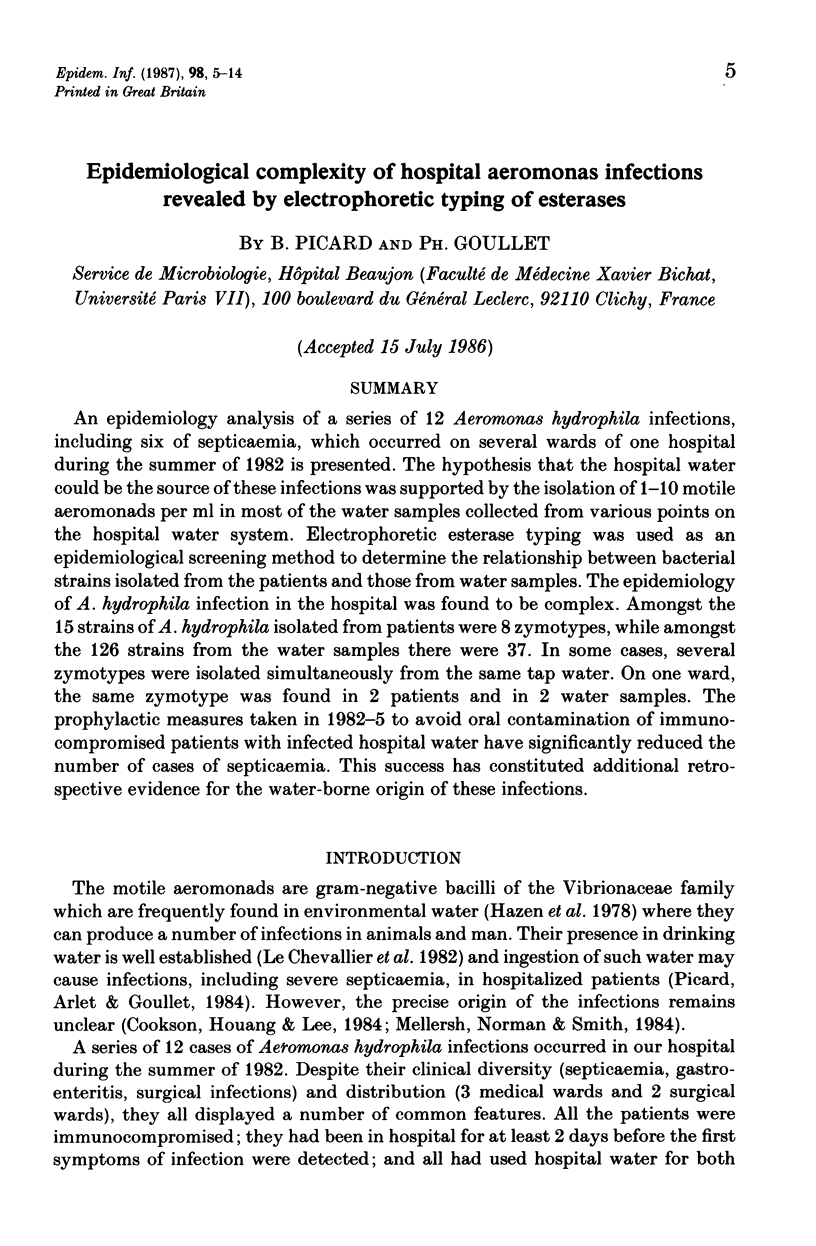
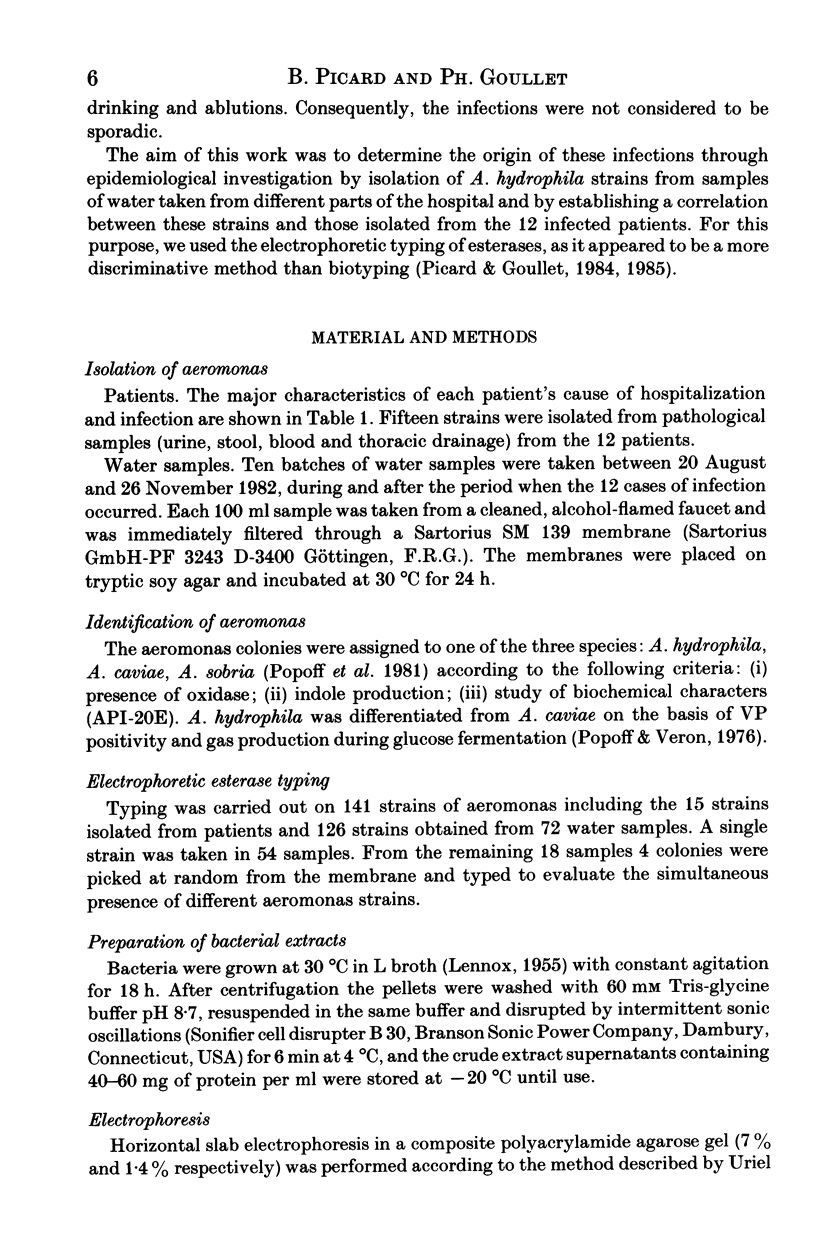
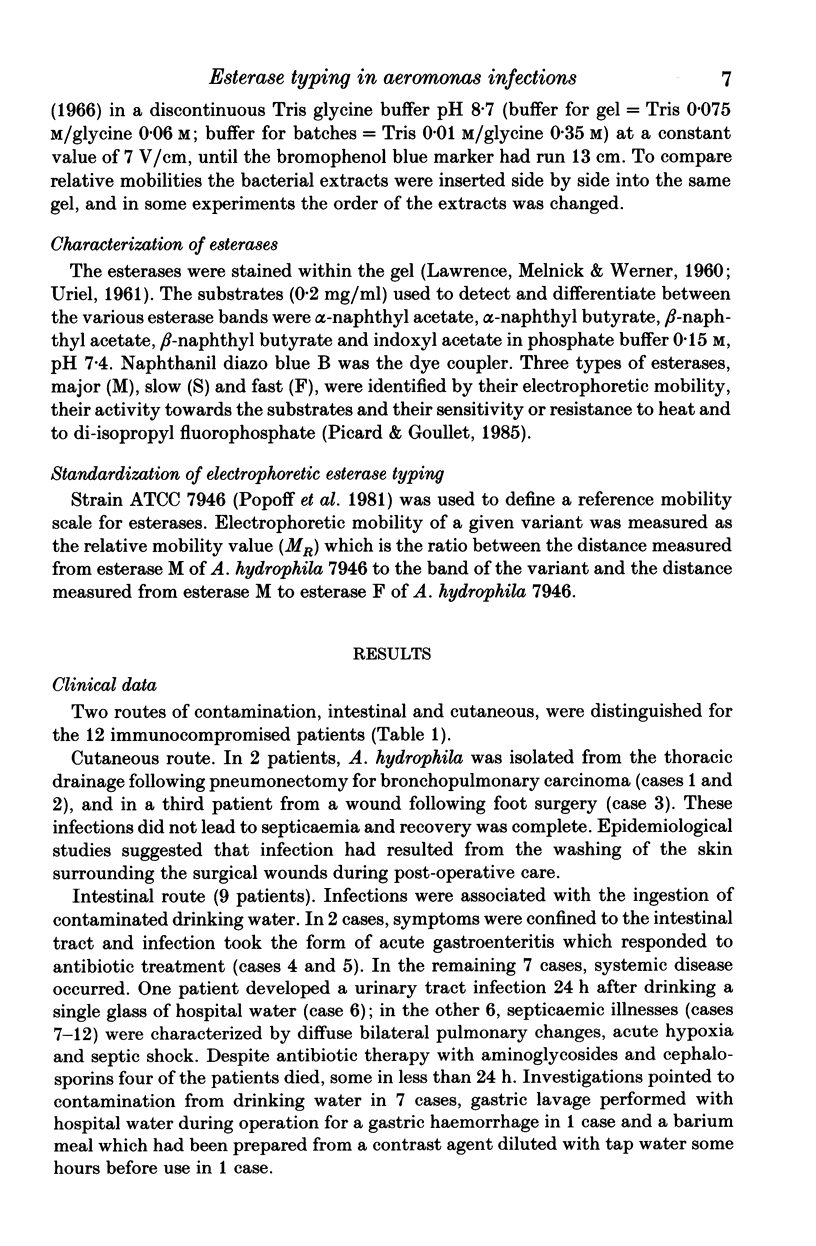
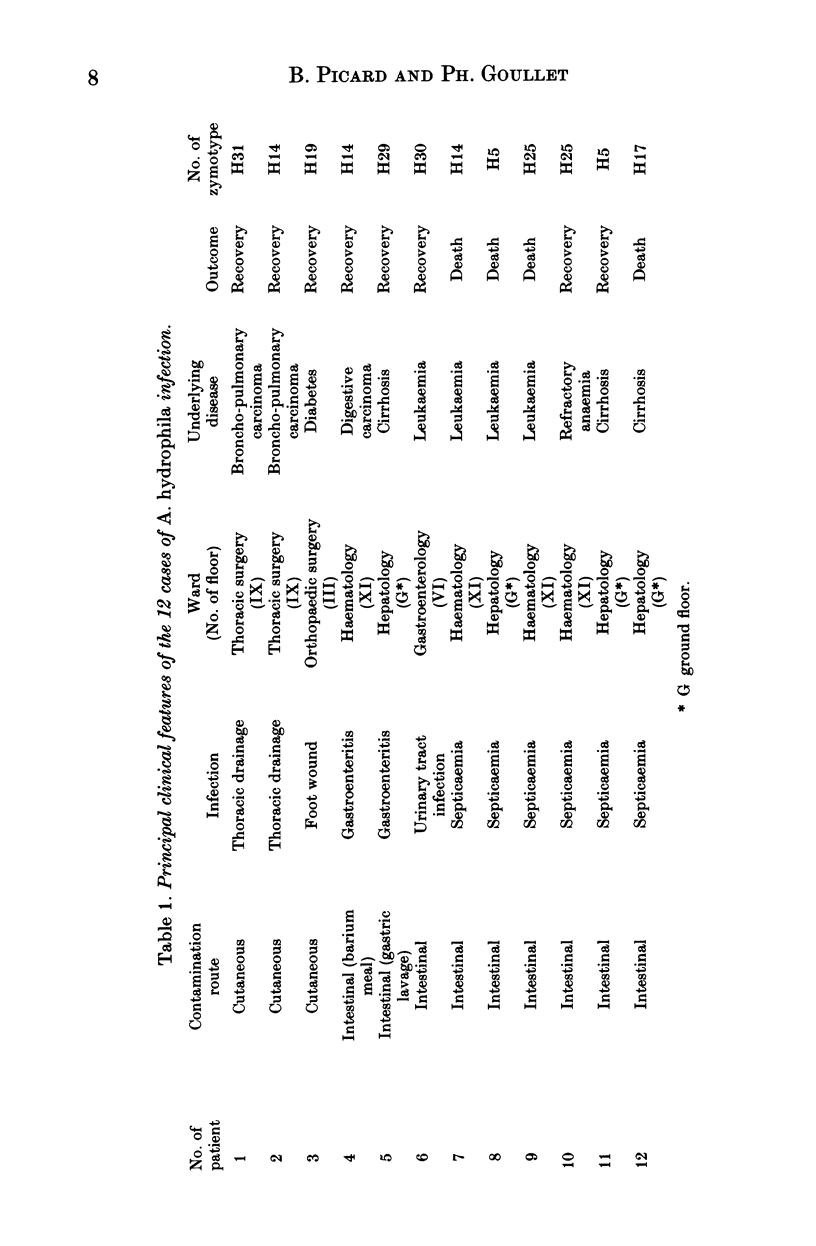
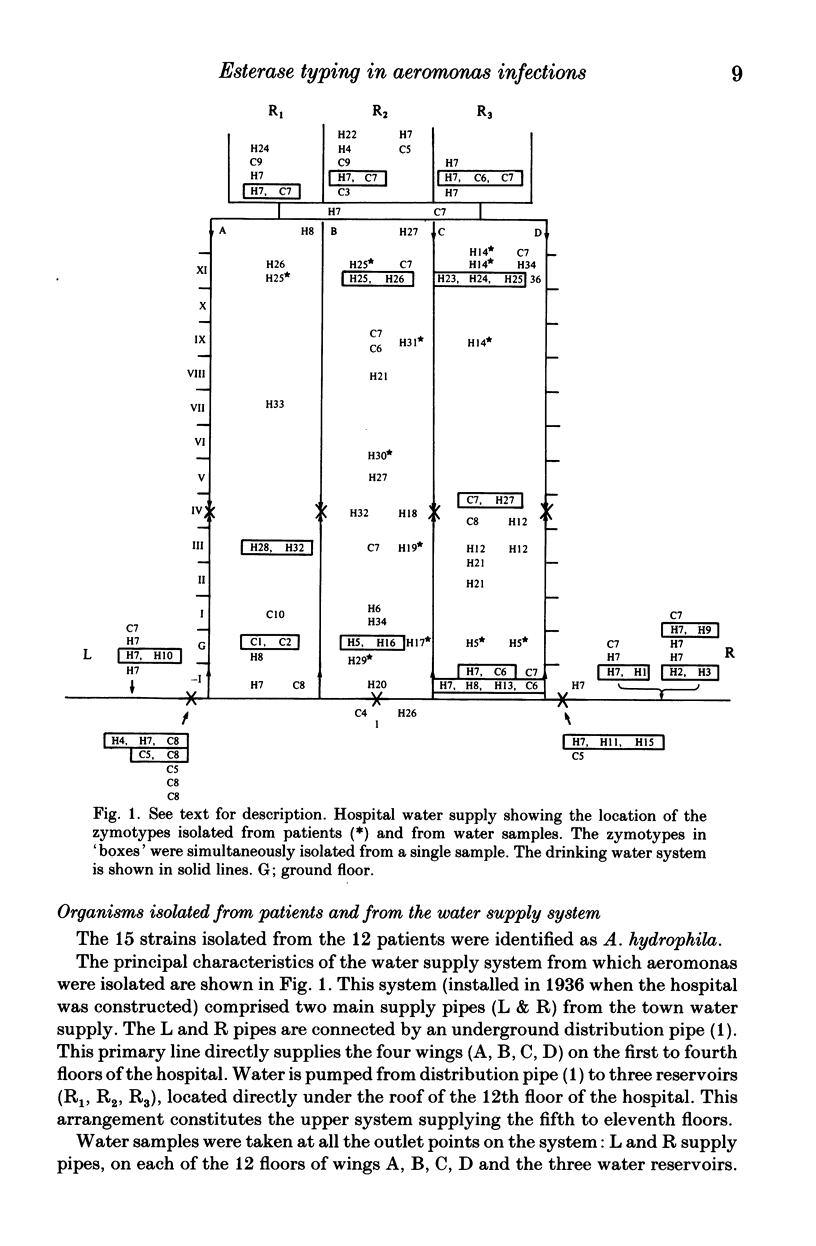
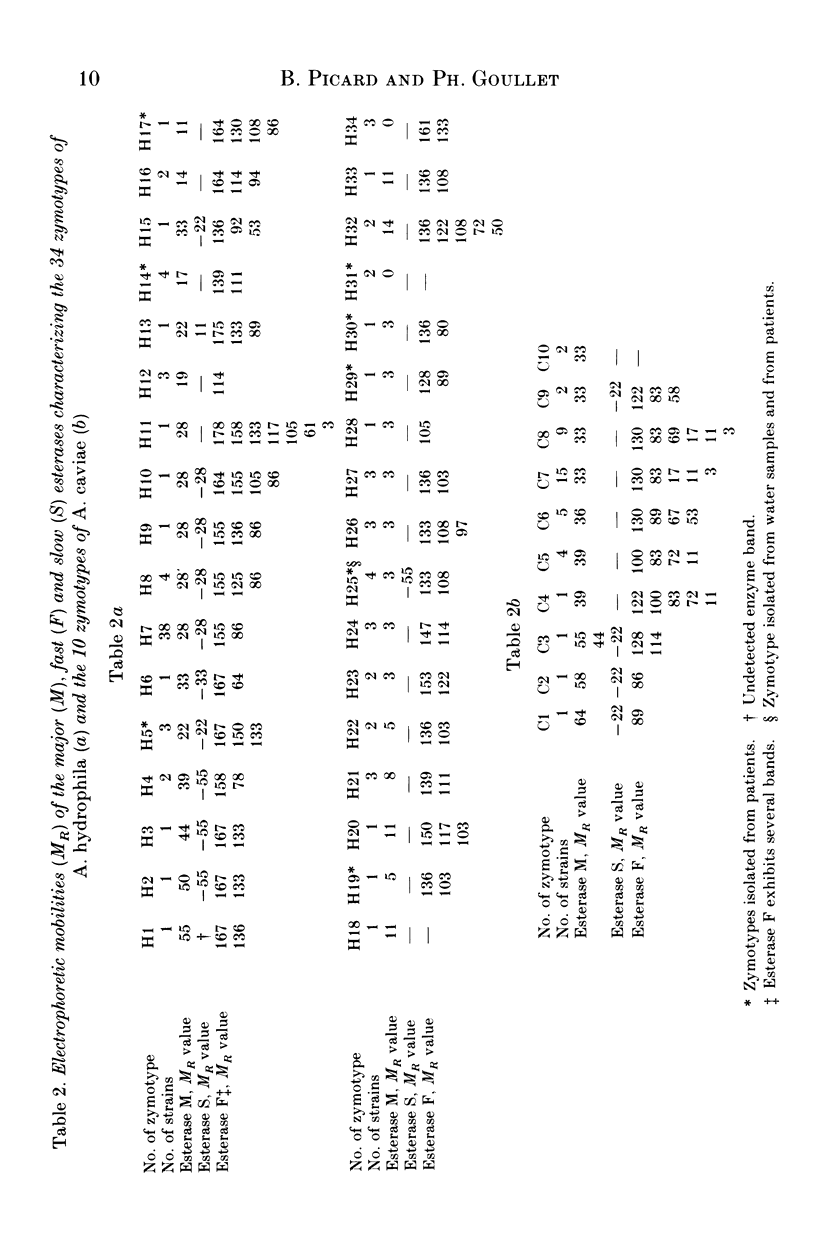
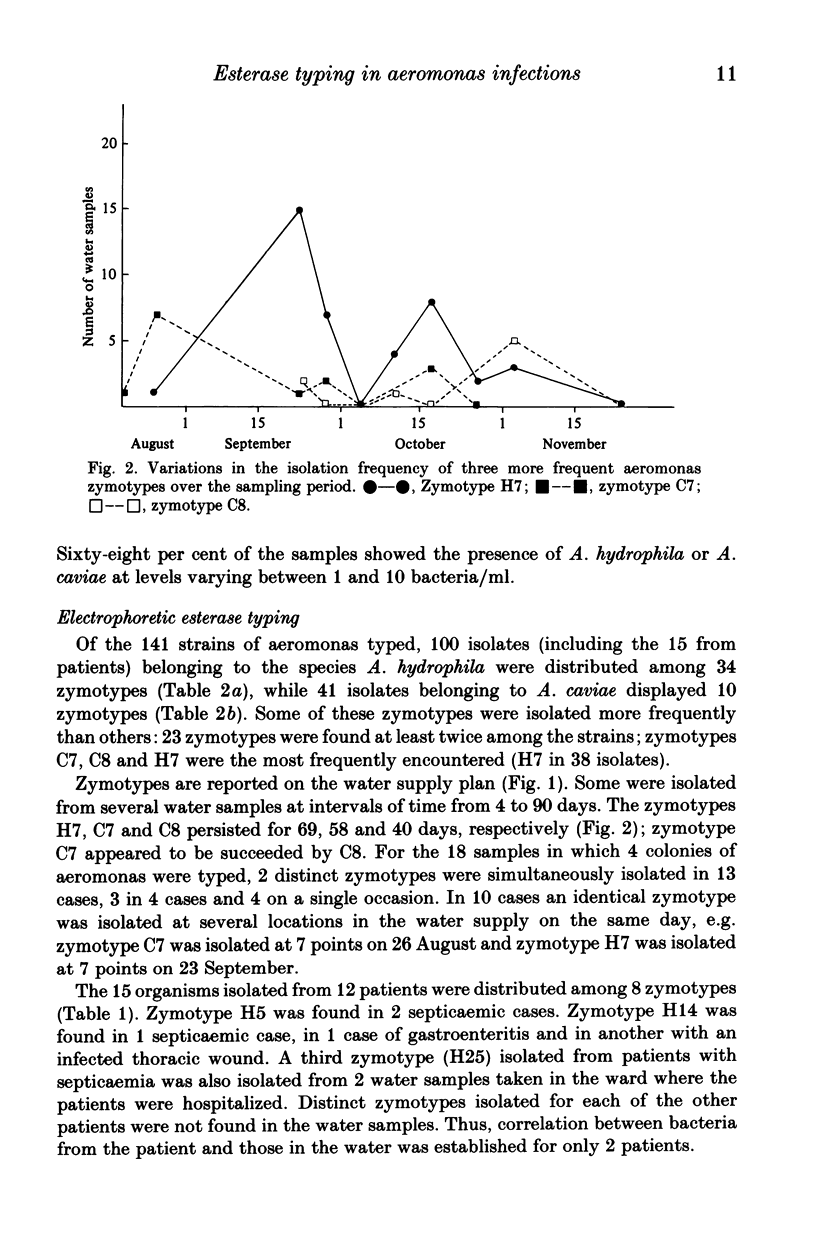
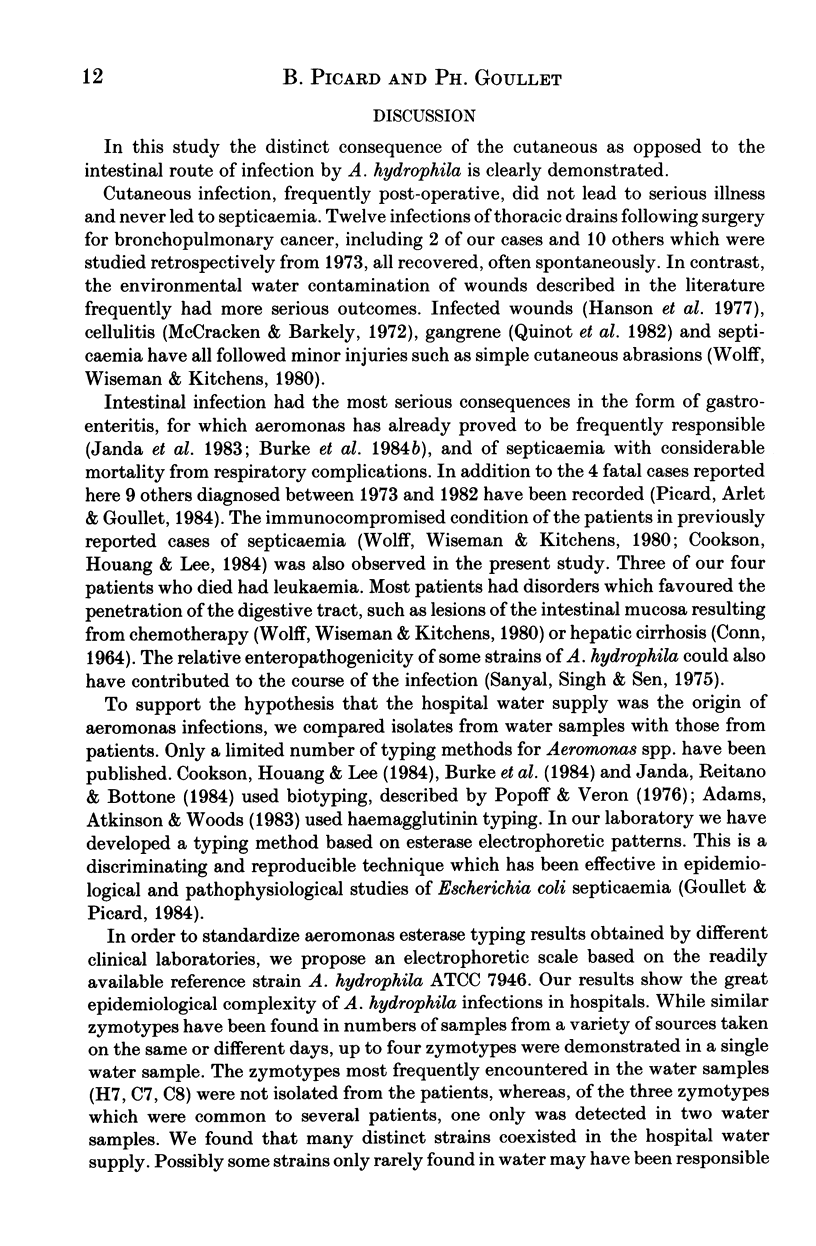
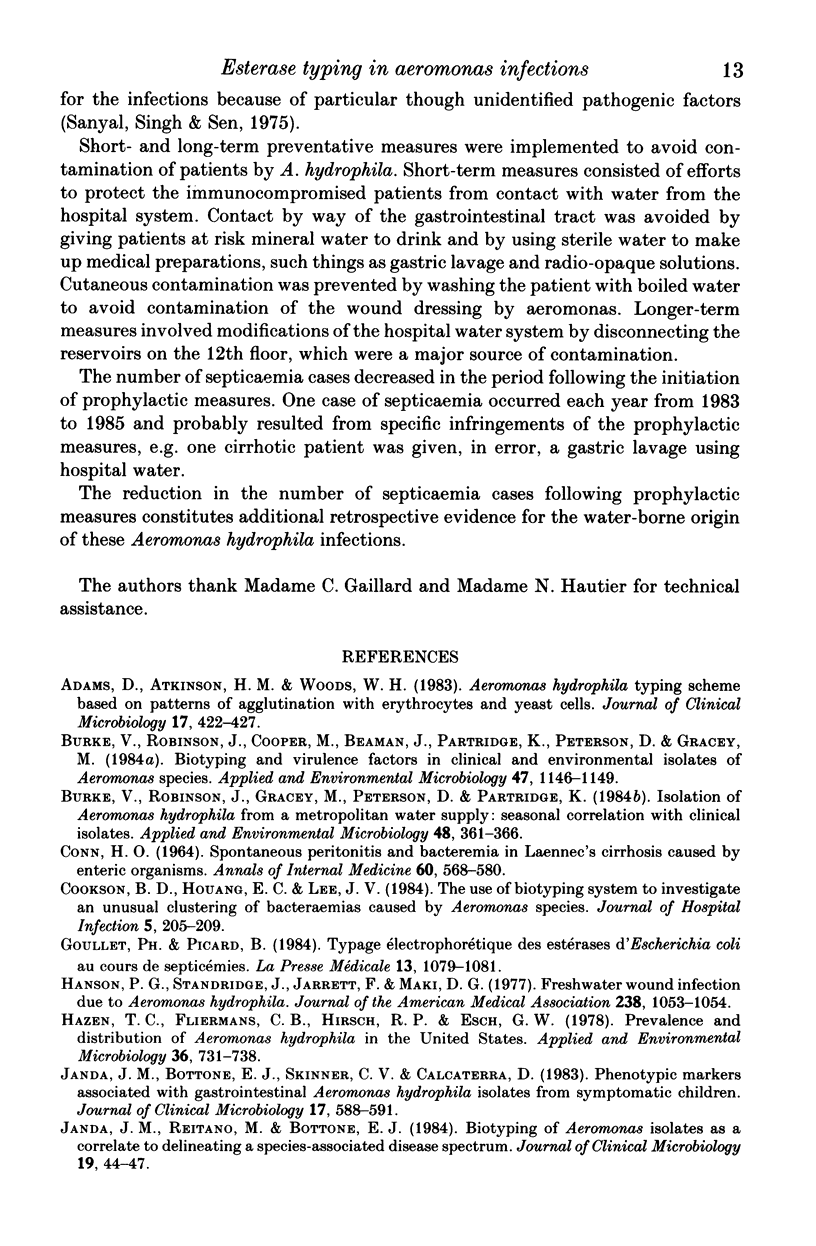

Selected References
These references are in PubMed. This may not be the complete list of references from this article.
- Adams D., Atkinson H. M., Woods W. H. Aeromonas hydrophila typing scheme based on patterns of agglutination with erythrocytes and yeast cells. J Clin Microbiol. 1983 Mar;17(3):422–427. doi: 10.1128/jcm.17.3.422-427.1983. [DOI] [PMC free article] [PubMed] [Google Scholar]
- Burke V., Robinson J., Cooper M., Beaman J., Partridge K., Peterson D., Gracey M. Biotyping and virulence factors in clinical and environmental isolates of Aeromonas species. Appl Environ Microbiol. 1984 May;47(5):1146–1149. doi: 10.1128/aem.47.5.1146-1149.1984. [DOI] [PMC free article] [PubMed] [Google Scholar]
- Burke V., Robinson J., Gracey M., Peterson D., Partridge K. Isolation of Aeromonas hydrophila from a metropolitan water supply: seasonal correlation with clinical isolates. Appl Environ Microbiol. 1984 Aug;48(2):361–366. doi: 10.1128/aem.48.2.361-366.1984. [DOI] [PMC free article] [PubMed] [Google Scholar]
- CONN H. O. SPONTANEOUS PERITONITIS AND BACTEREMIA IN LAENNEC'S CIRRHOSIS CAUSED BY ENTERIC ORGANISMS. A RELATIVELY COMMON BUT RARELY RECOGNIZED SYNDROME. Ann Intern Med. 1964 Apr;60:568–580. doi: 10.7326/0003-4819-60-4-568. [DOI] [PubMed] [Google Scholar]
- Cookson B. D., Houang E. T., Lee J. V. The use of a biotyping system to investigate an unusual clustering bacteraemias caused by Aeromonas species. J Hosp Infect. 1984 Jun;5(2):205–209. doi: 10.1016/0195-6701(84)90125-7. [DOI] [PubMed] [Google Scholar]
- Goullet P., Picard B. Typage électrophorétique des estérases d'Escherichia coli au cours de septicémies. Presse Med. 1984 Apr 21;13(17):1079–1081. [PubMed] [Google Scholar]
- Hanson P. G., Standridge J., Jarrett F., Maki D. G. Freshwater wound infection due to Aeromonas hydrophila. JAMA. 1977 Sep 5;238(10):1053–1054. [PubMed] [Google Scholar]
- Hazen T. C., Fliermans C. B., Hirsch R. P., Esch G. W. Prevalence and distribution of Aeromonas hydrophila in the United States. Appl Environ Microbiol. 1978 Nov;36(5):731–738. doi: 10.1128/aem.36.5.731-738.1978. [DOI] [PMC free article] [PubMed] [Google Scholar]
- Janda J. M., Bottone E. J., Skinner C. V., Calcaterra D. Phenotypic markers associated with gastrointestinal Aeromonas hydrophila isolates from symptomatic children. J Clin Microbiol. 1983 Apr;17(4):588–591. doi: 10.1128/jcm.17.4.588-591.1983. [DOI] [PMC free article] [PubMed] [Google Scholar]
- Janda J. M., Reitano M., Bottone E. J. Biotyping of Aeromonas isolates as a correlate to delineating a species-associated disease spectrum. J Clin Microbiol. 1984 Jan;19(1):44–47. doi: 10.1128/jcm.19.1.44-47.1984. [DOI] [PMC free article] [PubMed] [Google Scholar]
- LAWRENCE S. H., MELNICK P. J., WEIMER H. E. A species comparison of serum proteins and enzymes by starch gel electrophoresis. Proc Soc Exp Biol Med. 1960 Dec;105:572–575. doi: 10.3181/00379727-105-26180. [DOI] [PubMed] [Google Scholar]
- LENNOX E. S. Transduction of linked genetic characters of the host by bacteriophage P1. Virology. 1955 Jul;1(2):190–206. doi: 10.1016/0042-6822(55)90016-7. [DOI] [PubMed] [Google Scholar]
- McCracken A. W., Barkley R. Isolation of Aeromonas species from clinical sources. J Clin Pathol. 1972 Nov;25(11):970–975. doi: 10.1136/jcp.25.11.970. [DOI] [PMC free article] [PubMed] [Google Scholar]
- Mellersh A. R., Norman P., Smith G. H. Aeromonas hydrophila: an outbreak of hospital infection. J Hosp Infect. 1984 Dec;5(4):425–430. doi: 10.1016/0195-6701(84)90012-4. [DOI] [PubMed] [Google Scholar]
- Picard B., Arlet G., Goullet P. Septicémies à Aeromonas hydrophila. Aspects épidémiologiques. Quinze observations. Presse Med. 1984 May 5;13(19):1203–1205. [PubMed] [Google Scholar]
- Picard B., Goullet P. Comparative electrophoretic profiles of esterases, and of glutamate, lactate and malate dehydrogenases, from Aeromonas hydrophila, A. caviae and A. sobria. J Gen Microbiol. 1985 Dec;131(12):3385–3391. doi: 10.1099/00221287-131-12-3385. [DOI] [PubMed] [Google Scholar]
- Picard B., Goullet P. Esterase electrophoresis: a new epidemiological screening test for Aeromonas hydrophila hospital infection. J Hosp Infect. 1984 Sep;5(3):335–337. doi: 10.1016/0195-6701(84)90085-9. [DOI] [PubMed] [Google Scholar]
- Popoff M., Véron M. A taxonomic study of the Aeromonas hydrophila-Aeromonas punctata group. J Gen Microbiol. 1976 May;94(1):11–22. doi: 10.1099/00221287-94-1-11. [DOI] [PubMed] [Google Scholar]
- Quinot J. F., Delatte P., Flye Sainte Marie F., Richard C. Gangrène gazeuse à Aeromonas hydrophila. Un piège thérapeutique. Nouv Presse Med. 1982 Sep 25;11(37):2783–2784. [PubMed] [Google Scholar]
- Sanyal S. C., Singh S. J., Sen P. C. Enteropathogenicity of Aeromonas hydrophila and Plesiomonas shigelloides. J Med Microbiol. 1975 Feb;8(1):195–198. doi: 10.1099/00222615-8-1-195. [DOI] [PubMed] [Google Scholar]
- Uriel J. Méthode d'électrophorèse dans des gels d'acrylamide-agarose. Bull Soc Chim Biol (Paris) 1966;48(8):969–982. [PubMed] [Google Scholar]
- Wolff R. L., Wiseman S. L., Kitchens C. S. Aeromonas hydrophila bacteremia in ambulatory immunocompromised hosts. Am J Med. 1980 Feb;68(2):238–242. doi: 10.1016/0002-9343(80)90360-5. [DOI] [PubMed] [Google Scholar]


